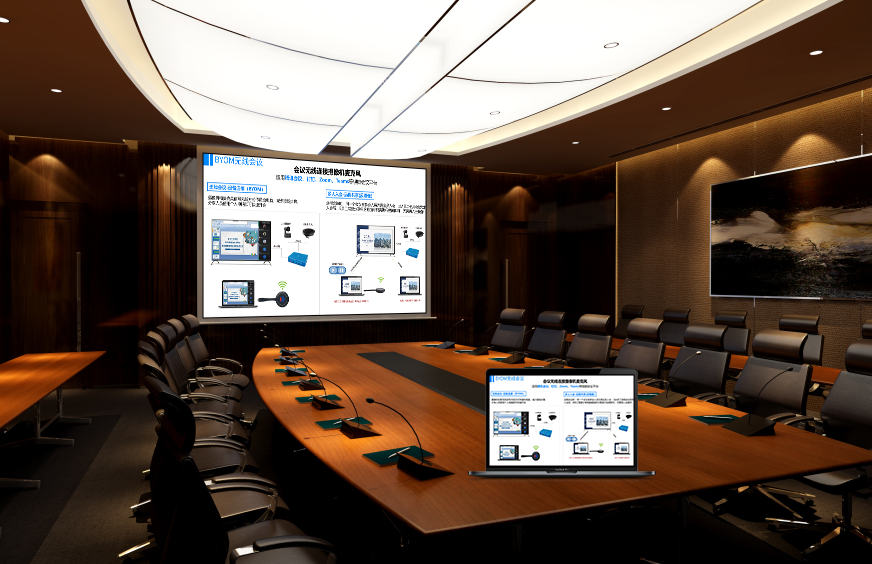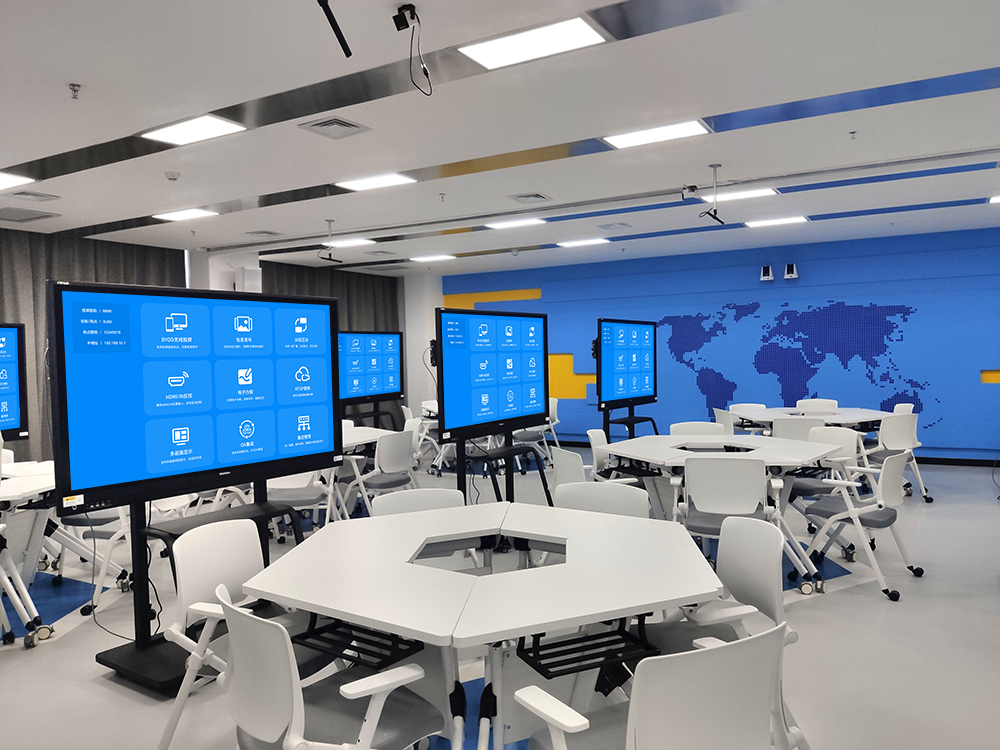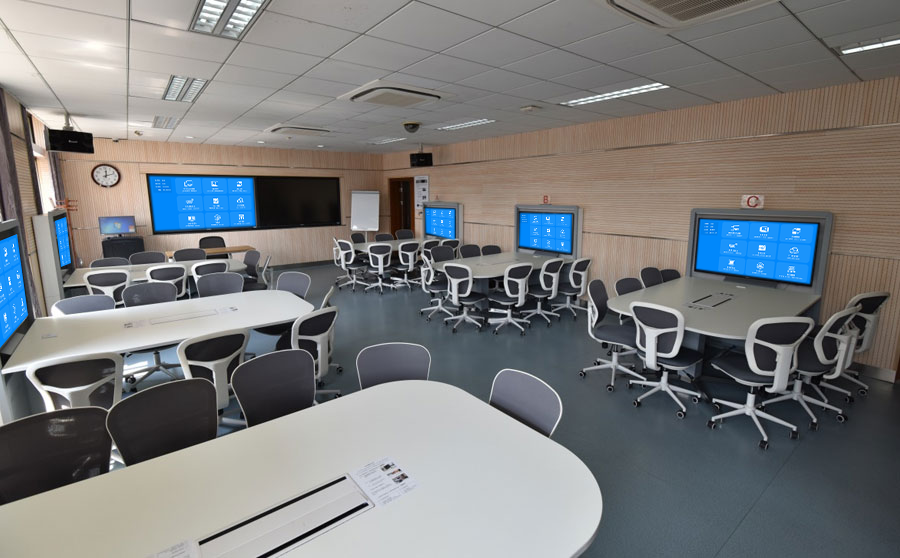Screen Mirroring: Breaking Device Boundaries, Unleashing Content Flow Freedom
In today’s digital life and work, screen mirroring technology has evolved from an “optional feature” to an “essential tool.” It allows content from phones, computers, and tablets to be easily projected onto larger screens. Whether for meeting presentations, classroom teaching, or home entertainment, it enhances the experience through content “magnification” and “sharing.” A high-quality screen mirroring solution not only needs to solve the problem of “being able to mirror” but also to achieve “fast, stable, and flexible mirroring.”
I. All-Protocol Compatibility: Any Device Can “Cast”
One of the core pain points of screen mirroring is device compatibility, and an excellent screen mirroring solution achieves “full ecosystem coverage“:
Seamless Cross-System Support: It covers all operating systems: iOS (AirPlay), Android (Miracast), Windows (WiDi), and macOS (AirPlay Mirroring). Whether it’s photos from an iPhone, videos from a Huawei phone, documents from a MacBook, or PPTs from a Lenovo laptop, all can be mirrored with one click, regardless of device brand. For example, in a corporate meeting, a client can present a case study using a Samsung phone, and an employee can supplement data using a Windows computer, both seamlessly projecting to the large meeting screen, avoiding the embarrassment of “device incompatibility.”
Old Devices “Rejuvenated”: It supports enabling traditional devices (like older projectors or non-smart TVs) to receive mirrored content via a screen mirroring dongle. A 10-year-old projector in a school can, with just a dongle, receive mirrored content from a student’s tablet, avoiding the need to replace old equipment and reducing upgrade costs.
Multiple Devices Concurrent, No Conflicts: It supports up to 8 devices connecting and switching screen mirroring simultaneously. In a classroom, 6 groups can take turns presenting their results; in a meeting, 5 participants can alternate sharing content. There’s no need for repeated disconnections, boosting switching efficiency by 90%.
II. Lightning-Fast Connection: Start Mirroring in 3 Seconds
Complex operations can turn screen mirroring from a “convenient tool” into a “burden.” Efficient screen mirroring solutions aim for “zero learning cost”:
Three Connection Methods to Choose From: QR code mirroring (phone scans QR code on large screen), pin code mirroring (enter a 6-digit number), and NFC tap-to-connect (phone taps near the dongle). Whether you’re a senior or a novice, you can connect in just 1 step. At a family gathering, an elder can scan a QR code with their phone to mirror a square dance video, and a child can tap to mirror a cartoon, all without needing help from younger family members.
No Software Installation Required: Devices don’t need to download apps or drivers. Screen mirroring relies on native system protocols, avoiding phone memory usage and reducing pop-up ads and privacy risks from third-party software. A temporary visitor can mirror from an unfamiliar phone without needing authorization to install software, making it secure and efficient.
Works Even in Weak Network Environments: In meeting rooms or classrooms with poor network signals, screen mirroring can be achieved via “direct connection mode” (device directly establishes a WiFi connection with the dongle), ensuring presentations aren’t interrupted without relying on the local area network.
III. High Definition, Low Latency: “Zero Loss” Content Presentation
The core of the screen mirroring experience lies in picture quality and fluidity. Professional solutions deliver “what you see is what you get”:
4K+60fps Ultra HD Transmission: Supports 4K resolution and 60 frames per second refresh rate. When playing high-definition movies, there’s no motion blur. CAD drawings show clear lines, and even animations and transitions in PPTs are precisely rendered. When design companies review proposals, 4K mirroring allows clients to clearly see the textures and colors of product details, leading to more accurate decisions.
Millisecond-Level Latency Control: Through optimized transmission algorithms, latency is compressed to within 80ms (virtually imperceptible to the naked eye). When mirroring games, phone operations and large-screen visuals synchronize in real-time, with no delay in movement or skill execution. In online classrooms, when a teacher uses a writing tablet to derive formulas, students watch in real-time on the large screen, just like in a face-to-face class.
Anti-Interference Stability Like Wired: Uses dual-band WiFi (2.4G+5G) and dynamic frequency hopping technology to ensure stable transmission even in environments dense with microwaves or routers, preventing screen freezes or audio-video desynchronization. In large meetings, even with 20 devices connected simultaneously, screen mirroring remains smooth.
IV. Interactive Features: From “Display” to “Collaboration”
Traditional screen mirroring is a one-way transmission, but smart solutions enable “two-way interaction,” unleashing collaborative potential:
Large Screen Reverse Control: Directly control the mirrored computer from the large meeting screen. Flip PPT pages, zoom documents, or pause videos without returning to your seat. The presenter can control the pace from the screen. In a classroom, a teacher can mark a student’s mirrored assignment on the large screen, with changes syncing to the student’s tablet for more efficient real-time feedback.
Multi-Person Annotation and Co-creation: Supports real-time annotation on mirrored content (different colors distinguish users). In meetings, team members can circle modification points on proposal documents. In class, students can annotate questions on courseware. All annotations sync in real-time, transforming “one-way lecturing” into “multi-directional discussion.”
Split-Screen Comparison Display: Project content from two devices in a split-screen format (e.g., old proposal from Computer A and new proposal from Computer B), making side-by-side comparison clear at a glance. During product reviews, an engineer can mirror design drawings, and the marketing department can mirror user feedback, allowing for more intuitive dual-screen comparative analysis.
V. Scenario-Based Adaptation: Covering All Needs
Screen mirroring isn’t a “one-size-fits-all” feature; it’s a “flexible tool” that can adapt to different scenarios:
Office Meetings: Supports “main screen + secondary screen” linkage, with the main screen displaying the PPT and the secondary screen showing attendee lists and agendas. After the meeting, mirrored content and annotations are automatically saved, generating time-stamped meeting minutes, saving manual recording time.
Classroom Teaching: The teacher’s end can “lock screen mirroring permissions” (preventing students from unauthorized mirroring) or “open student screen mirroring” (allowing students to actively share). It also supports “broadcasting” main screen content to group screens, ensuring students in the back can clearly see courseware. Group discussion results can be pushed to the main screen with one click, making classroom interaction more engaging.
Home Entertainment: Supports “phone screen-off mirroring” (large screen continues playing even if the phone screen is off), allowing you to chat on WeChat while watching a show without interruption. It automatically optimizes audio quality during mirroring, connecting to sound systems for 5.1 channel output, maximizing the home theater experience.
The ultimate value of screen mirroring technology is to free content from device size limitations and allow information transfer to break through spatial barriers. From the “constraint of an HDMI cable” to “totally wireless free flow,” and from “one-way display” to “two-way co-creation,” high-quality screen mirroring solutions are redefining the value of screens, making every share more efficient and every interaction more profound.